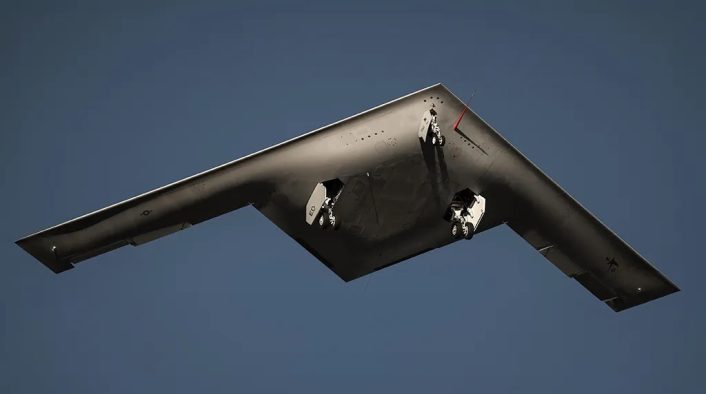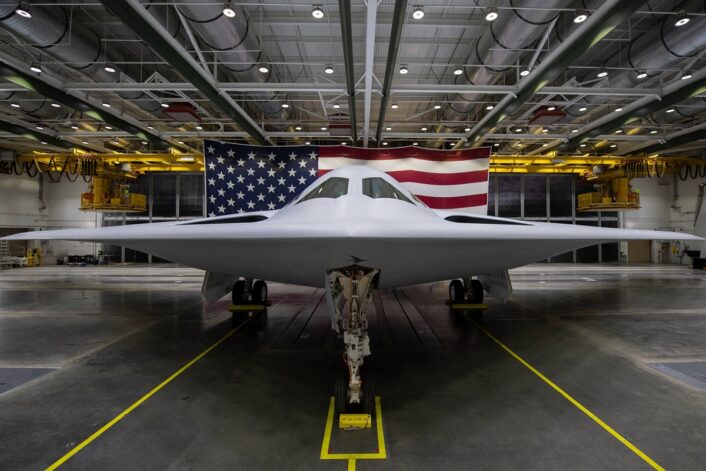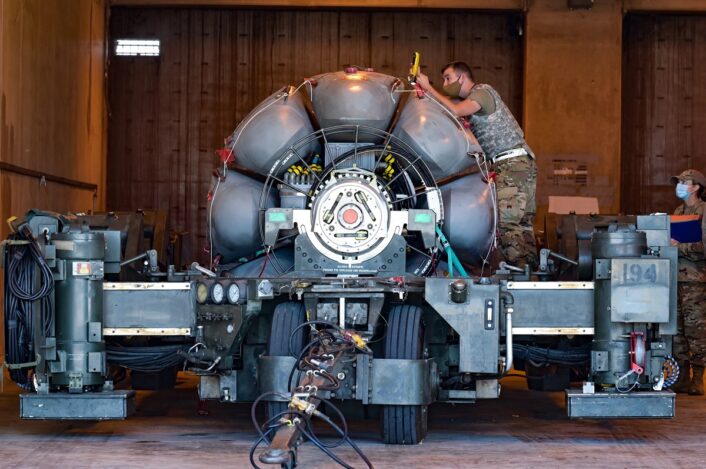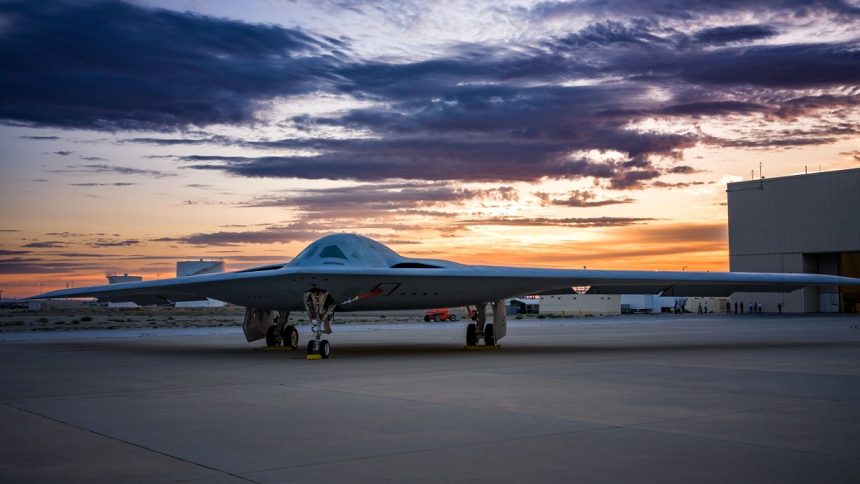The secretive test campaign is proceeding well, according to the Air Force acquisition chief, and working its way through test objectives.
As we often reported, the new B-21 Raider stealth bomber is currently undergoing flight testing at Edwards Air Force Base, California, although the U.S. Air Force has been tight-lipped about the status of the secretive aircraft since the first flight. The service has not even released photos of the Raider in flight or at Edwards A.F.B., and the ones available so far are from photographers who spotted it during its first flight or flying overhead during the following months.
On May 8, 2024, Air Force’s Service Acquisition Executive Andrew Hunter provided a rare update on the B-21’s status in a testimony to the Senate Committee on Armed Services regarding the Air Force modernization. The new info came out when Hunter was asked about the air leg of the nuclear triad, which will be composed by the B-21 and the Long-Range Stand-Off nuclear missile.
“We are in the flight test program, the flight test program is proceeding well,” said Hunter in response to Sen. Mark Kelly regarding the developments of the B-21 program. “It is doing what flight test programs are designed to do, which is helping us learn about the unique characteristics of this platform, but in a very, very effective way”.
Hunter did not further elaborate on the flight test campaign, as this is being considered highly sensitive. Similarly, the Air Force previously said it would not provide further details about the test program nor the number of flights the aircraft has flown. Hunter, however, mentioned that the program is on track and he’s encouraged by the results.
“We are working our way through the test objectives that we have for the platform, and I’m encouraged with how that’s progressing,” added Hunter continuing his answer to Sen. Kelly. “There are some key points still to come this year and I’m looking forward very much to talking to you when we can come back with data on those efforts and let you know where we stand, but as of today, good progress is being made with the flight test program. We believe we are on track.”

The digital design tools and capabilities applied to the B-21 have always been one of the talking points of the program, as they were defined fundamental to find and fix errors and problems early in the design process. Northrop Grumman mentioned, in fact, that advanced digital tools like digital twins, computational fluid dynamics (CFD) tools and simulation environments allow to model and test many aspects of the aircraft before even building it.
“If you get to the people who are the true experts on this topic, there is always a point about how is this piece, was this really digital or how was this done?” said Hunter when sped by Kelly if the B-21 is the first aircraft that would be considered to be fully digitally designed. “I would say this is the first aircraft where it is far more digital than not, you can say that we’ve taken into where we are at this stage of production and moving towards fielding”.
The effectiveness of these technologies was evident in initial testing with the first B-21 test article performing as expected during various ground tests. In fact, Northrop Grumman said testing of the engines, weapons bay doors, landing gear and control services demonstrated expected results and indicated the effectiveness and value of digital modeling.
“I think it has helped us with being as on track as we are, to demonstrating that the aircraft that we have built, the test is meeting our requirements, so I think higher fidelity and higher likelihood of success,” Hunter told Kelly when asked if digital design helped to obtain a relatively shorter timeline in getting the B-21 airborne. “There are other things that we did to contribute to this as well, which is we had quite some bit of discipline in setting requirements and looking for mature technologies, so a lot of good process things, but digital has been a key enabler and especially on the software side, so this platform is somewhat unique in the maturity of the software that we had available when the aircraft came out of the factory”.
Sen. Kelly asked also an update about the Long Range Stand Off (LRSO) weapon, defining it as critical for the B-21. The LRSO is the new nuclear missile which will replace the AGM-86B Air-Launched Cruise Missile, and will be employed by both the B-21 Raider and the B-52 Stratofortress.
“It is tracking well, the program is definitely on track to meet its timeline and deliver to the warfighter any day and we’re also doing well on cost for that program as well,” said Hunter.
The B-21 Raider
Shortly after the beginning of flight testing, Northrop Grumman has been awarded the contract for the Low-Rate Initial Production of the new B-21 Raider stealth bomber. The Pentagon did not release the contract’s details, however, when at the bomber’s rollout in 2022, the Air Force stated it expected average unit procurement cost of $692 million.
The number of aircraft covered by the first contract was not disclosed, although some reports after the first flight said it could cover up to 21 aircraft. At the time of the first flight, Northrop Grumman said six airframes were in various stages of production, including the one already flying, which was named “Cerberus”.
Last month, U.S. Air Force Chief of Staff Gen. David W. Allvin said might not acquire more than the currently planned 100 B-21 Raider 6th generation stealth bombers as something new with more effective technology might come up by the time the 100 bombers are built and delivered.

The B-21 is the future of the Air Force’s bomber force, scheduled to become its backbone and provide critical operational capability for both conventional and nuclear missions and precision effects en masse against targets worldwide. The bomber force is currently undergoing an evolution which will see the fleet going from the current 75 B-52Hs, 20 B-2As and 45 B-1Bs to new composition of 100 B-21As and 75 B-52Js in the 2030s.
The B-21 Raider is carrying out test flights out of Edwards Air Force Base, in California, where the aircraft landed at the end of its first flight from Air Force Plant 42 in Palmdale on Nov.10, 2023. Although the U.S. Air Force has been tight-lipped about the status of the secretive aircraft since then, with no further details or photos of the bomber’s first flight and arrival at Edwards AFB released, it acknowledged that the flight test campaign is proceeding.
A spokesperson confirmed, in fact, that the B-21 flew on Jan. 17, 2024, adding that the Air Force would not provide further details about the test program nor the number of flights the aircraft has flown. A flight test was rumored to have taken place on Mar. 28, while another one possibly took place on Apr. 1. The stealth bomber took to the skies again on Apr. 4, 2024, when it was caught in a video while flying at high altitude, escorted by a chase aircraft.
The AGM-181 LRSO
The AGM-181 Long Range Standoff (LRSO) Cruise Missile is a long range survivable standoff weapon capable of delivering lethal nuclear effects on strategic targets, which will replace the currently fielded AGM-86 Air Launched Cruise Missile (ALCM). The LRSO will be integrated on both the B-52 Stratofortress and B-21 Raider bomber aircraft.
The LRSO weapon system will be capable of penetrating and surviving advanced Integrated Air Defense Systems (IADS) from significant standoff ranges to prosecute strategic targets in support of the Air Force’s global attack capability and strategic deterrence core function.
In 2020, the Air Force selected Raytheon as the prime contractor for the program and, a year later, LRSO entered Engineering, Manufacturing, and Development (EMD). In 2022, it was revealed that LRSO conducted nine successful major flight tests demonstrating its ability to safely separate from the B-52H aircraft, as well as weapon flight surface deployment, engine operations, flight control actuations and controlled flight.

Initially, the Air Force and Congress have also been discussing potential acquisition of conventionally armed variants of the missile. However, it was later decide to not pursue a conventional warhead version of the LRSO, with the Air Force now looking to the AGM-158B JASSM-ER (Joint Air-to-Surface Standoff Missile-Extended Range) and the AGM-158D JASSM-XR (JASSM-Extreme Range) to fill the requirement for a conventional air-launched cruise missile.









